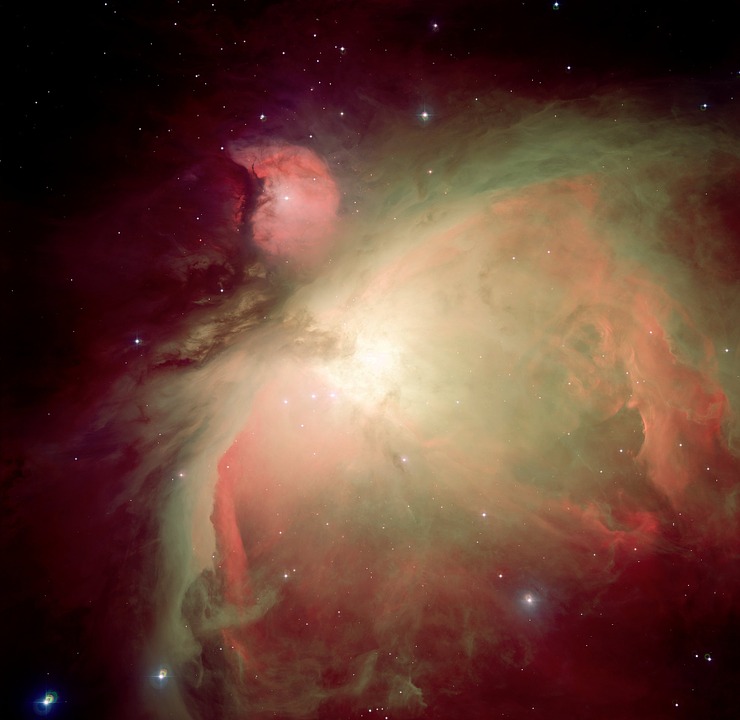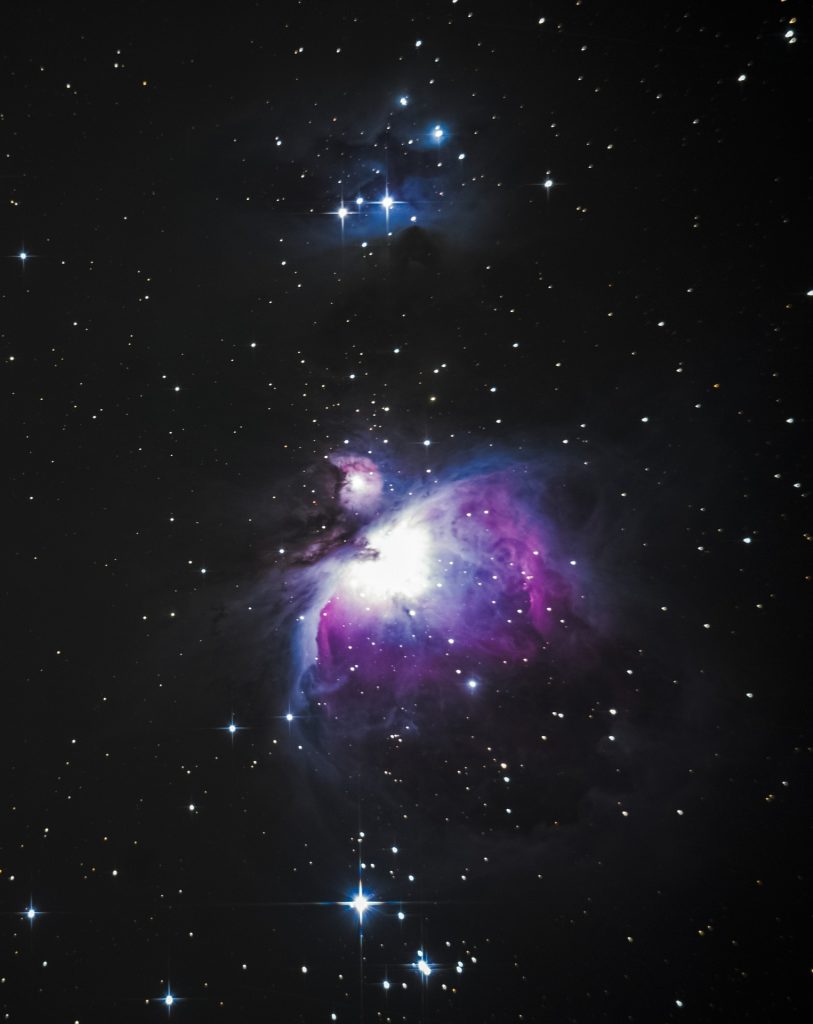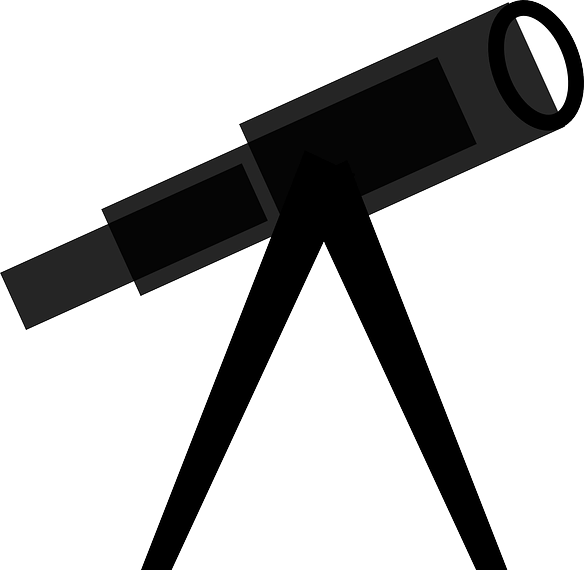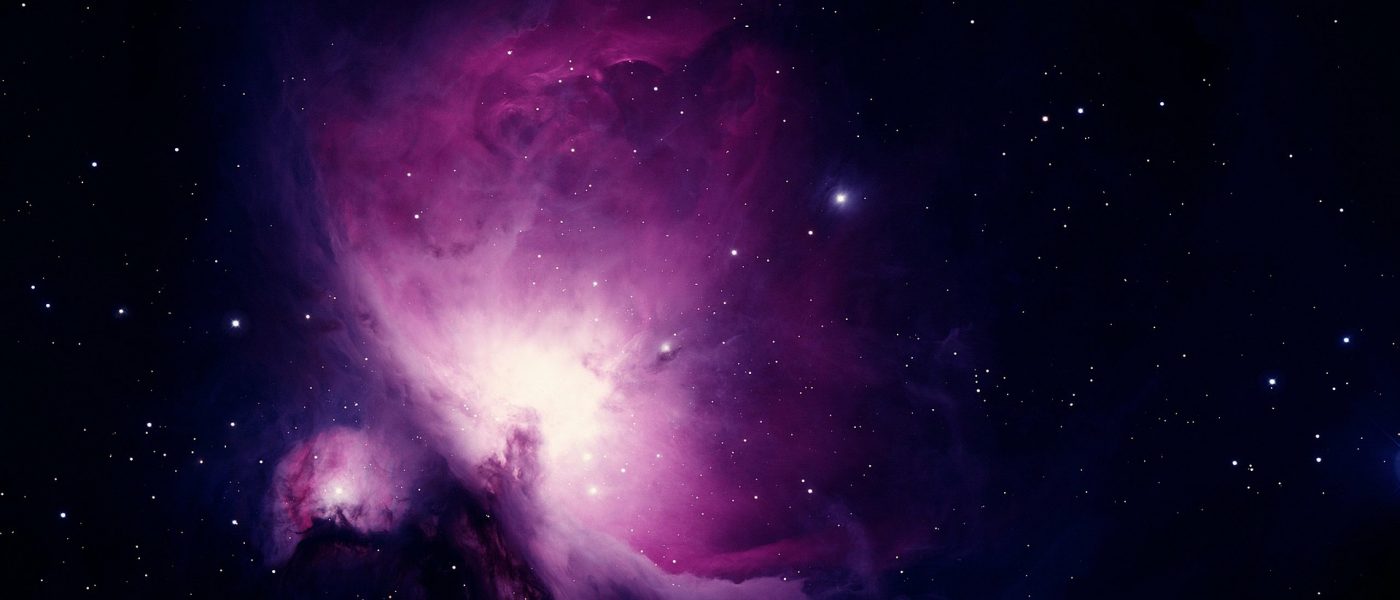The Nebula is visible with the naked eye even from areas affected by some light pollution. It is seen as the middle “star” in the “sword” of Orion, which are the three stars located south of Orion’s Belt. The star appears fuzzy to sharp-eyed observers, and the nebulosity is obvious through binoculars or a small telescope. The peak surface brightness of the central region is about 17 Mag/arcsec2 (about 14 milli nits) and the outer bluish glow has a peak surface brightness of 21.3 Mag/arcsec2 (about 0.27 millinits).[9] (In the photos shown here the brightness, or luminance, is enhanced by a large factor.)

The Orion Nebula contains a very young open cluster, known as the Trapezium due to the asterism of its primary four stars. Two of these can be resolved into their component binary systems on nights with good seeing, giving a total of six stars. The stars of the Trapezium, along with many other stars, are still in their early years. The Trapezium is a component of the much larger Orion Nebula Cluster, an association of about 2,800 stars within a diameter of 20 light years.[10] Two million years ago this cluster may have been the home of the runaway stars AE Aurigae, 53 Arietis, and Mu Columbae, which are currently moving away from the nebula at speeds greater than 100 km/s.[11]
Observers have long noted a distinctive greenish tint to the nebula, in addition to regions of red and of blue-violet. The red hue is a result of the Hα recombination line radiation at a wavelength of 656.3 nm. The blue-violet coloration is the reflected radiation from the massive O-class stars at the core of the nebula.

The green hue was a puzzle for astronomers in the early part of the 20th century because none of the known spectral lines at that time could explain it. There was some speculation that the lines were caused by a new element, and the name nebulium was coined for this mysterious material. With better understanding of atomic physics, however, it was later determined that the green spectrum was caused by a low-probability electron transition in doubly ionized oxygen, a so-called “forbidden transition”. This radiation was all but impossible to reproduce in the laboratory at the time, because it depended on the quiescent and nearly collision-free environment found in the high vacuum of deep space.[1
Wikipedia contributors. (2020, January 2). Orion Nebula. In Wikipedia, The Free Encyclopedia. Retrieved 06:47, January 12, 2020, from https://en.wikipedia.org/w/index.php?title=Orion_Nebula&oldid=933749754


